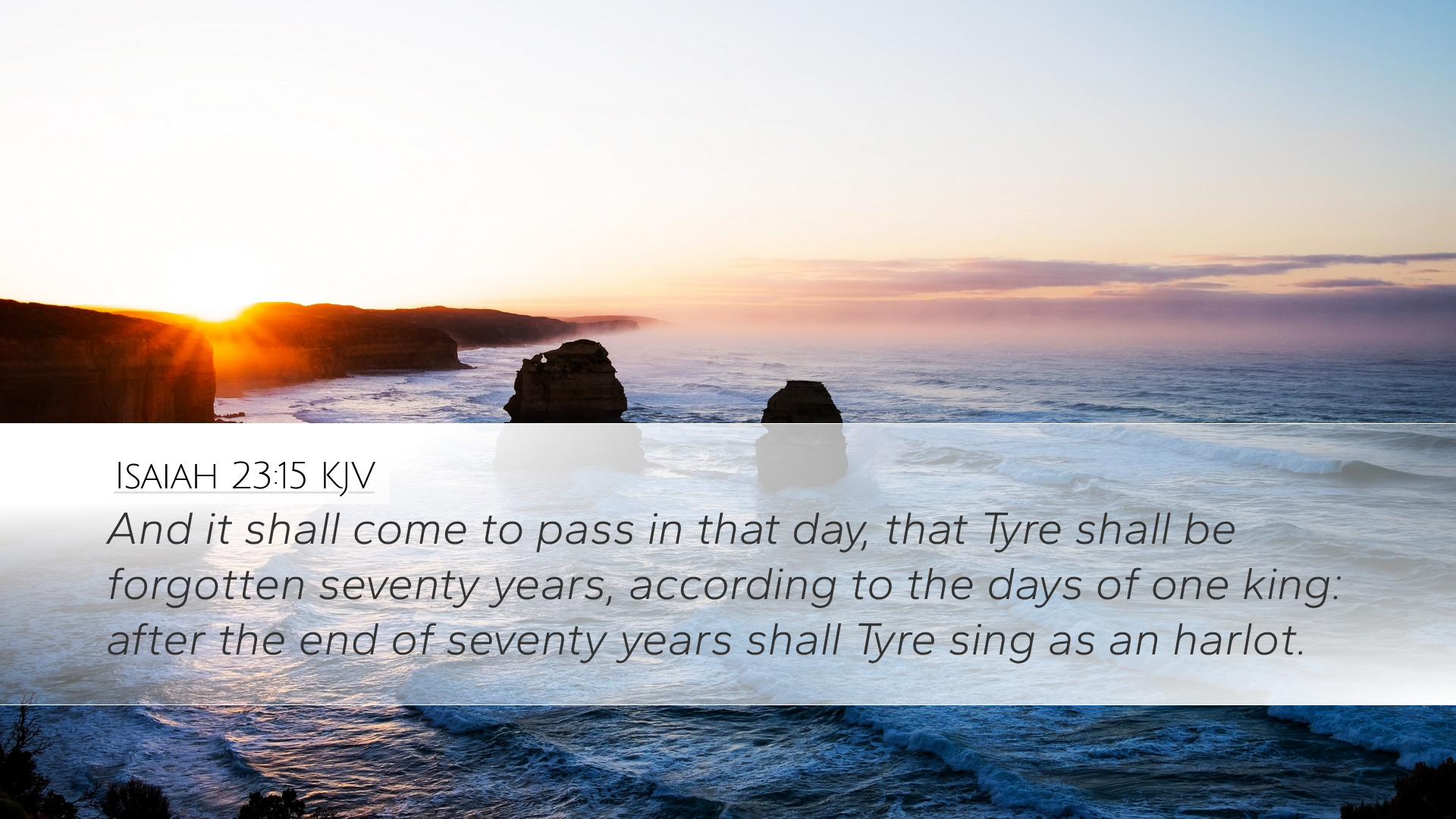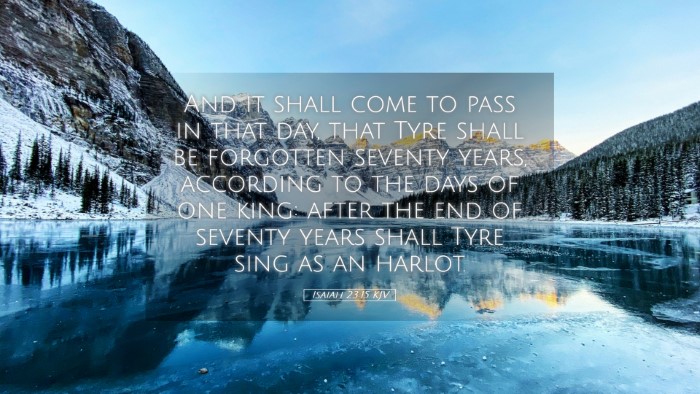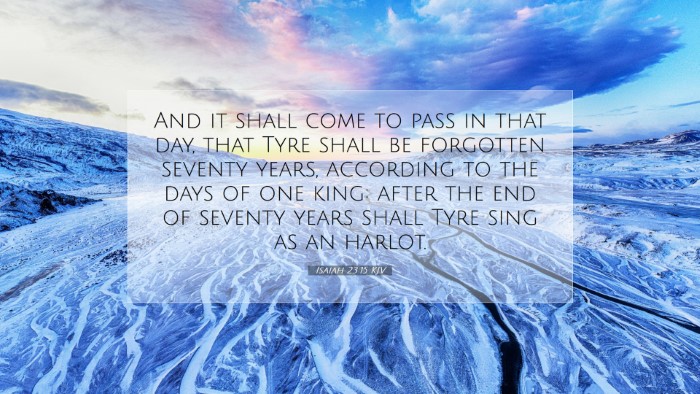Commentary on Isaiah 23:15
This verse from the Book of Isaiah is a profound text that reflects on the transient nature of human endeavors, particularly in relation to the city of Tyre, which was a significant trading center. The insights from various public domain commentaries provide a comprehensive understanding of its implications.
Verse Context
Isaiah 23:15 (KJV): "And it shall come to pass in that day, that Tyre shall be forgotten seventy years, according to the days of one king: after the end of seventy years shall Tyre sing as an harlot."
Historical Background
Tyre was a prominent Phoenician city known for its maritime commerce and wealth. The prophecy against Tyre is situated within the broader context of Isaiah’s oracles concerning the nations. It examines the ultimate decline of worldly power and the eventual restoration of God's people.
Commentary Insights
Matthew Henry
Matthew Henry's commentary emphasizes the significant transition in the fortunes of Tyre, predicting a period of forgottenness and desolation. He explains that the seventy years symbolize a complete generation, echoing the biblical theme of restoration after judgment.
- Forgottenness of Tyre: Henry notes that Tyre would become a shadow of its former self, losing its influence and glory as a result of God's judgment.
- Seventy Years: He draws a parallel to the Babylonian captivity, suggesting that the period signifies a time of purging and preparation for restoration.
- Moral Lesson: Henry argues that the destruction and subsequent restoration of Tyre serves as a reminder of the impermanence of human endeavors compared to God's eternal purposes.
Albert Barnes
Albert Barnes provides a detailed analysis of the text, focusing on the implications of Tyre's fate and the prophetic significance of the seventy years. He notes how this prophecy accounts for the historical events that transpired during this period.
- Literal Fulfillment: Barnes points out that the prophecy of Tyre's desolation was fulfilled historically as it fell to the Babylonians and later Alexander the Great, further supporting the notion of divine judgment.
- Metaphorical Interpretation: He also offers insight into the metaphorical use of Tyre as emblematic of worldly pride and commerce, suggesting that any city or empire that relies on human strength rather than divine favor is destined for decline.
- The Harlot Imagery: He discusses the significant imagery of Tyre singing as a harlot, symbolizing both the seductive allure of commerce and the eventual degradation that accompanies it when divorced from righteousness.
Adam Clarke
Adam Clarke takes a practical approach to Isaiah 23:15, delving into its theological implications and its application to contemporary faith. His commentary reflects a pastoral sensitivity that speaks to the heart of believers.
- Understanding Judgment: Clarke encourages readers to recognize that divine judgment, while severe, leads to restoration and renewal, emphasizing the hope embedded in God’s plans even after desolation.
- Encouragement for Believers: He posits that the loss of worldly power is ultimately necessary for believers, teaching them to place their trust in God alone, rather than in material gain.
- Hope Beyond Ruin: Clarke also highlights how this passage resonates with the promise of God's restoration; post-judgment, Tyre is depicted as returning to joy, albeit through a process of transformation.
Themes and Applications
The verse includes several profound themes relevant to pastors, students, theologians, and Bible scholars:
- The Transience of Power: The verse teaches the lesson that human power, wealth, and influence are ultimately fleeting.
- Divine Sovereignty: It underscores God's control over nations and kingdoms, a crucial aspect of the prophetic literature.
- Restoration and Renewal: The conclusion of the prophecy, which includes a new song for Tyre, symbolizes hope, suggesting that through divine intervention, what is lost can be regained in a transformed state.
- Moral Responsibility: For contemporary interpretation, this calls for ethical engagement with commerce—highlighting that success should not come at the expense of righteousness.
Conclusion
Isaiah 23:15 powerfully encapsulates both the judgment of God upon nations characterized by pride and self-reliance as well as the hope for future restoration. The commentaries of Matthew Henry, Albert Barnes, and Adam Clarke offer rich insights that highlight the weight of prophetic literature and its relevance for today. They serve as a reminder to believers of the importance of grounding their lives in spiritual truth, recognizing the transient nature of worldly power, and embracing the hope offered through Christ.


